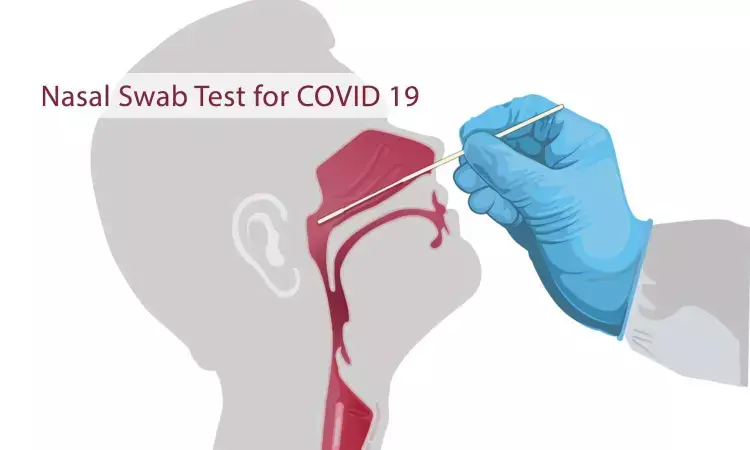- Home
- Medical news & Guidelines
- Anesthesiology
- Cardiology and CTVS
- Critical Care
- Dentistry
- Dermatology
- Diabetes and Endocrinology
- ENT
- Gastroenterology
- Medicine
- Nephrology
- Neurology
- Obstretics-Gynaecology
- Oncology
- Ophthalmology
- Orthopaedics
- Pediatrics-Neonatology
- Psychiatry
- Pulmonology
- Radiology
- Surgery
- Urology
- Laboratory Medicine
- Diet
- Nursing
- Paramedical
- Physiotherapy
- Health news
- Fact Check
- Bone Health Fact Check
- Brain Health Fact Check
- Cancer Related Fact Check
- Child Care Fact Check
- Dental and oral health fact check
- Diabetes and metabolic health fact check
- Diet and Nutrition Fact Check
- Eye and ENT Care Fact Check
- Fitness fact check
- Gut health fact check
- Heart health fact check
- Kidney health fact check
- Medical education fact check
- Men's health fact check
- Respiratory fact check
- Skin and hair care fact check
- Vaccine and Immunization fact check
- Women's health fact check
- AYUSH
- State News
- Andaman and Nicobar Islands
- Andhra Pradesh
- Arunachal Pradesh
- Assam
- Bihar
- Chandigarh
- Chattisgarh
- Dadra and Nagar Haveli
- Daman and Diu
- Delhi
- Goa
- Gujarat
- Haryana
- Himachal Pradesh
- Jammu & Kashmir
- Jharkhand
- Karnataka
- Kerala
- Ladakh
- Lakshadweep
- Madhya Pradesh
- Maharashtra
- Manipur
- Meghalaya
- Mizoram
- Nagaland
- Odisha
- Puducherry
- Punjab
- Rajasthan
- Sikkim
- Tamil Nadu
- Telangana
- Tripura
- Uttar Pradesh
- Uttrakhand
- West Bengal
- Medical Education
- Industry
Rapid Olfactory Test- a Potential Screening Tool for COVID-19

Olfactory dysfunction (OD) is one of the earliest and strongest predictors of COVID-19 infection, and thus is promising as a disease screening tool, reports a study published in the JAMA Otolaryngology Head & Neck Surgery.
Compared with objective testing, subjective olfactory assessments significantly underreport OD. Thus, an inexpensive, quick, and sensitive method of assessing olfaction may be beneficial for the early diagnosis and spread prevention of COVID-19. Therefore, researchers, Mena Said and colleagues from the Division of Otolaryngology–Head and Neck Surgery, Department of Surgery, University of California, San Diego evaluated the feasibility of a novel, objective olfactory test as part of an initial screening for COVID-19 in adults with unknown disease status.
This prospective, cross-sectional study enrolled a total of 163 healthy adults (aged ≥ 18 years) from a single college campus COVID-19 screening site.
Participants were screened for OD using a novel scent card (SAFER Diagnostics) followed immediately by polymerase chain reaction (PCR) testing for SARS-CoV-2 from nasopharyngeal swabs.Answers were processed electronically via a QR code. An incorrect choice was classified as OD. Participant demographics, medical history, COVID-19 symptoms, and subjective smell function on a binary and 10-point visual analog scale were also collected.
Multivariable logistic regression was conducted to assess the association between SAFER and COVID-19 PCR results while controlling for variables selected a priori as common symptoms of COVID-19: fever, fatigue, and cough.
The following results were highlighted-
a. Of those who tested PCR-positive for COVID-19, 75% (12 out of 16) failed olfactory screening compared with 4.8% (7 out of 147) among those testing PCR-negative for COVID-19.
b. The sensitivity, specificity, positive predictive value, and negative predictive value of the scent card in detecting those with COVID-19 were 75.0%, 95.2%, 63.2%, and 97.2%, respectively.
c. Including the symptom fatigue along with OD achieved a 93.8% sensitivity and 89.8% specificity in disease screening.
d. The addition of fever and cough did not further increase sensitivity
e. While only 37.5% (6 out of 16) of COVID-19 test-positive participants reported subjective anosmia, 75% failed screening with the scent card.
f. A failed scent card screen was the greatest predictor of COVID-19 positivity (odds ratio [OR], 80.24; 95% CI, 14.77-435.90) when compared with other symptoms including cough, fever, fatigue, and a history of COVID-19 exposure.
As a result, the authors concluded that "a novel olfactory test alone had a sensitivity of 75% and specificity of 95.2% in detecting COVID-19 using PCR testing as the gold standard."
Dr. Nandita Mohan is a practicing pediatric dentist with more than 5 years of clinical work experience. Along with this, she is equally interested in keeping herself up to date about the latest developments in the field of medicine and dentistry which is the driving force for her to be in association with Medical Dialogues. She also has her name attached with many publications; both national and international. She has pursued her BDS from Rajiv Gandhi University of Health Sciences, Bangalore and later went to enter her dream specialty (MDS) in the Department of Pedodontics and Preventive Dentistry from Pt. B.D. Sharma University of Health Sciences. Through all the years of experience, her core interest in learning something new has never stopped. She can be contacted at editorial@medicaldialogues.in. Contact no. 011-43720751
Dr Kamal Kant Kohli-MBBS, DTCD- a chest specialist with more than 30 years of practice and a flair for writing clinical articles, Dr Kamal Kant Kohli joined Medical Dialogues as a Chief Editor of Medical News. Besides writing articles, as an editor, he proofreads and verifies all the medical content published on Medical Dialogues including those coming from journals, studies,medical conferences,guidelines etc. Email: drkohli@medicaldialogues.in. Contact no. 011-43720751


